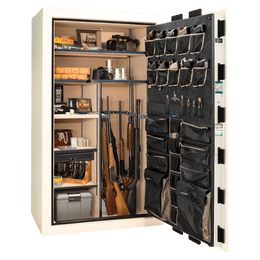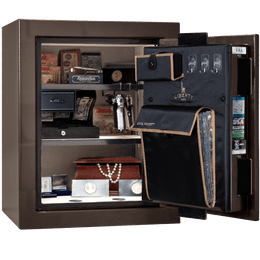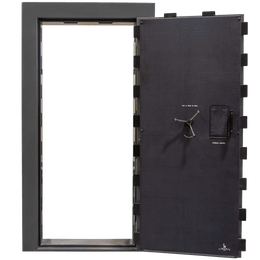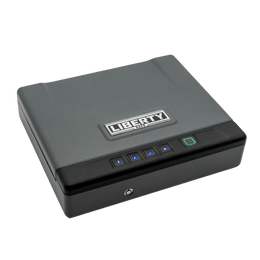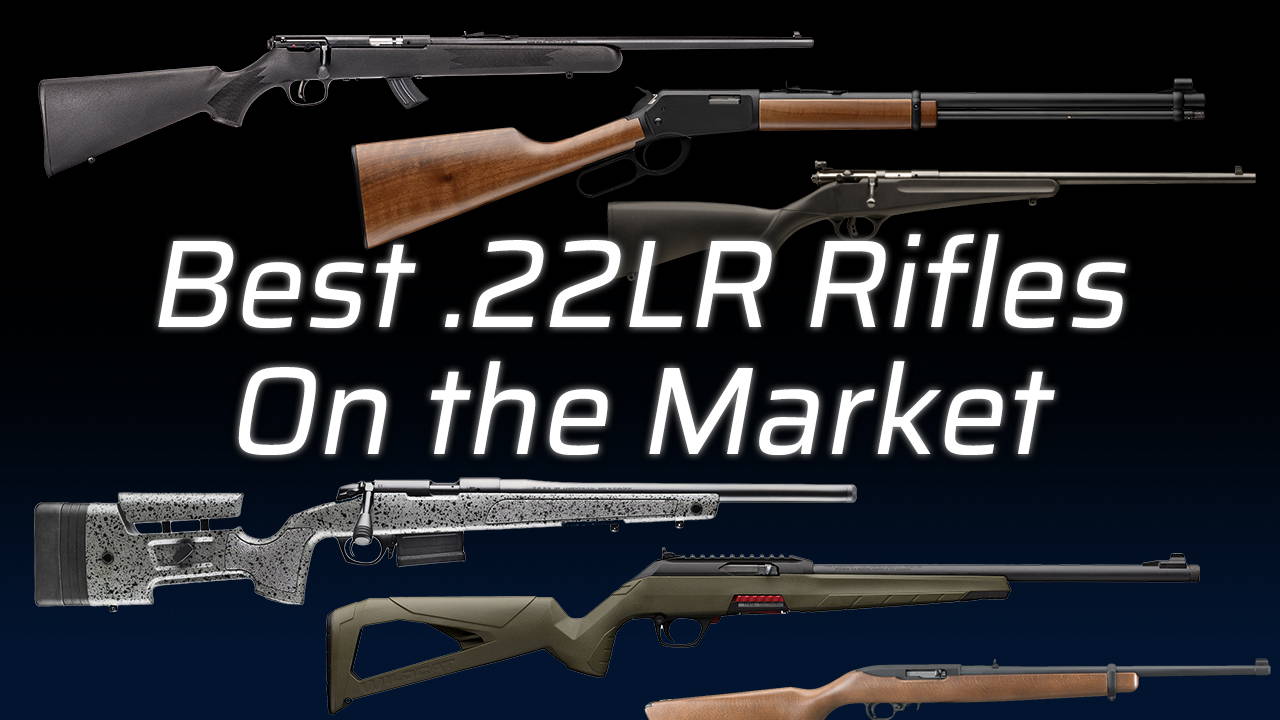The .22 Long Rifle cartridge (commonly abbreviated today as .22LR or .22 LR) has a somewhat problematic name. It debuted in 1887 as an improvement over the .22 Long cartridge of 1871 and the .22 Short cartridge of 1857. The .22 Long Rifle used the same case size and length as the .22 Long but included a longer, heavier, 40-grain bullet for improved performance on game and a greater effective range.
Though there are still firearms manufactured today for the .22 Short, they are extremely rare, and the improved performance and wide acceptance of the .22 Long Rifle has made the .22 Long effectively obsolete. The .22 Long Rifle cartridge was originally loaded with 4 grains of black powder, but during the last decade of the 19th century and the first 20 years of the 20th, the cartridge was eventually fully converted to smokeless powder and a non-corrosive priming compound. Today, the .22LR is by far the most-produced firearm cartridge in the world, with billions of rounds produced annually in the US alone.
The somewhat messy nature of the term Long Rifle in the name may confuse some people, who understandably might assume that the cartridge is intended exclusively for use in rifles, a type of long arm with a rifled barrel, intended to be fired from the shoulder. However, today .22LR is also widely chambered in handguns such as revolvers and pistols. When a tyro asks a gun shop owner what kind of ammunition is needed for a handgun and receives the answer, .22 Long Rifle, it can be a little confusing. Similarly, when discussing rifles that are chambered in the caliber, it gets a little awkward saying .22 Long Rifle rifles, though that is an accurate descriptor. For the purposes of this article we are going to focus on some of our top picks in several categories for rifles chambered for the widely popular .22LR cartridge.
Best semi-automatic .22LR rifle: Ruger 10/22
The semi-automatic Ruger 10/22, introduced in 1964, has sold more copies than any other current-production .22LR rifle in history at an estimated 7 million. Many shooters and hunters will name the 10/22 as their first firearm or first rifle.
Presumably the 10/22 refers to its 10-shot, rotary .22LR magazine, which is one of the features that makes this handy rifle so reliable and popular. Other box-type magazines often rely on cartridges being loaded one on top of the other and pushed downward in the magazine body, which can be particularly problematic when using rimmed cartridges like the .22LR. Bill Ruger’s innovative design borrowed from the Savage Model 99 and other rifles where the cartridges move in a circular pattern around a central follower or drum as they are loaded. This increases the width of the magazine, but the resulting reliability is well worth the tradeoff. The 10/22 is often the gold standard by which experienced shooters judge a semi-auto .22LR rifle’s reliability.
So many variants of the 10/22 have been introduced over its 6 decades of production that it would take a reference book to name and describe them all. There have been target models, sporters, tactical models, competition models, lightweight models, full-stocked International variants, takedown models, compact versions, collector’s editions, and also multiple Ruger Charger (pistol and short-barreled rifle) variants. However, our favorite, and usually our first recommendation to new owners, is the standard, classic 10/22 Carbine model pictured above, which currently has an MSRP of $389 in either wood or polymer stocks with a blued barrel, or $439 in stainless steel.
The lightweight, 5-pound carbine has the unique combination of easy handling and full-sized rifle feel, while still remaining usable and comfortable for many younger/smaller shooters. The carbine features a barrel band at the front of the stock, and while the standard (lightweight) barrel is acceptably accurate for a plinker or hunting rifle, accuracy is often much better with the heavy-barreled target variants. The good news is, if a different stock, barrel, or trigger is desired, all are easily swappable by the user, and the 10/22’s aftermarket support is huge and diverse. Complete rifles that follow the 10/22’s design pattern are available from premium manufacturers, and you can spend as little or as much as your heart desires. For many years aftermarket magazines were the only way to get more than 10 rounds into a 10/22, but a few years ago Ruger wisely began manufacturing their own 25-round magazines and they are very reliable and fairly inexpensive.
If you are permitted to own and shoot a semi-automatic .22 with a detachable magazine in your jurisdiction, you will not be disappointed with the Ruger 10/22.
Honorable mention .22LR semi-auto: Marlin Model 60
With 11 million built, the Model 60 was even more ubiquitous than the 10/22, and for good reason. Marlin’s design was sleek, handy, and attractive, its action was reliable, and with its 14-shot tubular magazine it could often be sold in markets where other semi-autos were prohibited. The Model 60 is not currently in production, but used examples abound. Here’s hoping Ruger (now making Marlin firearms) will choose to resurrect the nifty 60.
Best .22LR rifle for beginners and youth: Savage Rascal
The concept of the Boy’s Rifle (certainly girls are included) goes back centuries, and there have been many variations of a rifle specifically made for young shooters and hunters over the years. For our money, today it’s difficult to do better than the Savage Rascal. Savage is known for building high-quality firearms for the money, and their bolt-actions in particular are usually among the top 2 or 3 brands recommended for accuracy versus price. The 2.71-pound, $169 MSRP Rascal is an intelligent culmination of a lot of years of experience making rifles for beginners and young shooters.
Like many similar rifles, the Rascal is a single-shot bolt action, meaning there’s no magazine to lose or load. Once you pull the trigger and fire the round, the rifle is empty and safe. This is important for new or younger shooters who may have trouble managing a repeating firearm such as a semi-automatic. You place a single .22 Long Rifle cartridge into the chamber (or simply onto the shelf behind the chamber) and close the bolt, disengage the large, 2-position safety, and you’re ready to shoot. Unlike many youth-oriented rifles, the Rascal cocks the striker as you open the bolt, and the force needed is minimal. This is superior in our view to designs requiring the shooter to manually cock the striker after chambering, which can be difficult for younger shooters without a lot of hand strength, as well as adding complexity to the manual of arms.
We also like that the Rascal’s bolt can be lifted and a loaded round extracted from the chamber, if needed, with the safety still engaged. This is a very thoughtful feature that many older designs don’t permit. With just over an 11” length of pull, the Rascal will feel comically small for the standard American male, but the scaled-down ergonomics can be a godsend for youth and even smaller-statured adults. The adjustable rear sight is a useful and intuitive peep/aperture type at the rear of the receiver, which extends the sight radius. The receiver is drilled and tapped for scope mounts if desired. The polymer-stocked Rascal variant is available in 7 colors, or a wood-stocked model is available for $269. Left-hand options are also available.
Honorable mention beginner/youth .22LR rifle: Keystone Crickett
The Crickett series of rifles has been on the market since 1996, and is a very popular option. This design is the older type with a cocking knob at the rear of the bolt, so if your intended user has very low hand strength, take that into consideration. Cricketts start around $159 MSRP.
Best value lever-action .22LR rifle: Winchester Ranger
The new-for-2024 Winchester Ranger .22LR rifle is a completely innovative lever-action design, but it is visually and functionally similar to the cowboy guns and Winchester lever-actions of the past 150 years. The new 2-piece receiver is precision-machined aluminum rather than Zamak, zinc, or other low-cost material used by some competitors, and the forward half of the gun (from the upper receiver to the muzzle) and the rear half (including the lower/internal receiver, trigger group and buttstock) can be separated by removing one screw. This not only makes for a very handy, packable takedown rifle when disassembled, but also allows the easy removal of the bolt and the cleaning of the barrel from the breech. Compared to legacy lever-action designs, this is a huge advantage, particularly for .22LR rifles which need frequent cleaning and lubrication.
The lever-action feel is remarkably buttery for the price ($419.99 MSRP), and the 15-shot tubular magazine feeds rounds into the action very quickly and smoothly. The satin oil-finished walnut stock lends a real rifle feel, and the Ranger balances nicely in the hands like a classic levergun. The sights are basic as you would expect, with the rear blade’s elevation adjustable via a ramped/stepped spacer, and is drift-adjustable for windage. This rifle looks, feels, and shoots so good that it might just be the best lever-action .22 out there… in addition to being the best value.
Honorable mention lever-action .22LR: Henry Repeating Arms
Henry offers a large lineup of lever-action rifles, including centerfire and rimfire chamberings. Their best fit for this category is their Classic Lever Action .22 Carbine ($457), which looks similar to a Winchester 1892 or 1894, but is scaled down for the .22LR cartridge. The receiver of this Henry is made of Zamak, which helps keep the price lower but isn’t super-durable, so take that into account. Henry has earned a lot of fans over the past couple of decades for their quality and customer service, so if you have any issues, we’re confident Henry will take care of you.
Nicest bolt-action .22LR sporting rifle for the money: CZ 457 American
CZ’s 457 series of bolt-action .22LR rifles is the follow-up to the Czech firm’s hugely popular 452 series. Multiple configurations and styles are available, but many US shooters prefer the American’s styling and ergonomics, with a straight cheek comb and more conservative lines. Featuring a cold-hammer-forged light-profile 24” threaded barrel and a classic-style varnished Circassian walnut stock with fleur-de-lis checkering, the 457 American looks and feels like the quality rifle it is. The trigger is very crisp and is adjustable down to 2.5 lbs, which is sufficient both for field/hunting use as well as informal target shooting from the bench. And you will likely be very happy when you shoot some targets, as the 457 is capable of producing tiny groups with good ammo. The 457 American weighs around 6.2 pounds, so it’s not insubstantial while still remaining light enough for a full day in the field chasing squirrels or other small game.
Other improvements of the 457 include a push-to-fire safety lever (forward for fire), a separate bolt-removal control on the left side of the receiver, a visual and tactile cocked-striker indicator, and a short, 60-degree bolt throw. You can also swap barrels quickly and easily. The standard walnut-stocked CZ 457 American retails for a very reasonable $599 (suggested retail price), with a left-hand version for $629. A heavy-barrel Varmint model is available for $649. If you prefer the European-style stock and iron sights, the 457 Lux retails for $629.
Most accurate .22LR rifle at the lowest price: Savage Mark II
All things considered, a bolt-action rifle is almost the least-expensive design for a .22 rifle (the break-action single-shot is the cheapest), and is certainly the least-expensive repeating rifle design. (A repeating rifle is one capable of carrying and firing more than one round between reloading.) If you’re a most-bang-for-your-buck gun buyer looking for a .22LR rifle, it would be hard to do better than a Savage Mark II. Current MSRP for the standard Savage Mark II F bolt-action model with a blued finish and matte black synthetic stock is $269, though many retailers list it for $239 and it has been sold for under $200 within the past couple of years. Even at full MSRP the Mark II is a heck of a lot of rifle for the money. Savage’s barrels are known for excellent accuracy, and their AccuTrigger revolutionized the industry standards for a quality, safe trigger at a very low price point. Many people find their Savage Mark IIs to be not just their most accurate inexpensive rifle, but their most accurate firearm, period.
Featuring a simple and reliable 10-round single-stack magazine, the Mark II F model comes with iron sights included, and the receiver is drilled and tapped for scope mounts. The rifle weighs 5.5 pounds, has a 21-inch barrel, and a 13.5” length of pull (perfect for most adult users). Multiple Mark II variants are available, including varmint, target, compact, and left-handed, in multiple stock configurations and finishes. The basic F model is one of our favorites, due to its high accuracy, low price, versatile iron sights, light weight, and overall fun factor. Following in the spiritual footsteps of long-time-favorite, less-expensive bolt-action .22LR rifles like the Remington 581, the Savage Mark II has earned a loyal following, and deserves all the praise it gets.
Most innovative entry to the .22LR semi-auto market: Winchester Wildcat
We mentioned above that the Ruger 10/22 is the undisputed king of semi-auto plinking, hunting, target shooting, or just plain fun .22LR rifles. Well, about 4 years ago Winchester set out to challenge Ruger for the crown with its new, well-thought-out, and innovative Wildcat rifle. Weighing in at just 4 pounds, the Wildcat was introduced in a skeletonized, modern, yet still-attractive polymer stock, though as of 2023 it’s available in the Sporter configuration with a hardwood stock. With a starting MSRP of $289.99, it’s roughly $100 cheaper than the base-model 10/22, and the Wildcat punches above its weight with a lot of features intended to woo potential buyers away from the Ruger.
Like the Ruger, the Wildcat utilizes an ultra-reliable 10-round rotary magazine. In fact, Ruger 10/22 magazines will fit and function in the Wildcat, which is a very smart move on Winchester’s part. 10/22 magazines are everywhere and are a proven-reliable system. Rather than reinvent the wheel, Winchester has improved it. Winchester’s version of the magazine is more easily serviceable, as well as featuring a last-round bolt-hold-open, which the Ruger lacks. You can also use the exposed serrated wheel to take pressure off the follower as you load cartridges, which is a nice touch. Additionally, the modern-looking red-serrated grasping surfaces on the sides of the receiver allow you to remove the magazine either by using the typical finger latch in front of the magazine, or by simply grabbing those red serrations and moving them slightly to the rear. This unlatches the magazine and drops it securely into your palm (which is naturally placed there as you grasp those surfaces on both sides). This is a lot more convenient than Ruger’s design, and we think it looks pretty cool, also.
Another improvement the Wildcat offers over the Ruger is an easy, tool-less, field-serviceable takedown system. You do have to dry-fire the empty rifle to remove tension on the striker (which we’re not super-fond of, but you have to do the same with every Glock pistol so we can live with it), but after that you just press forward on the red striker housing through a hole in the rear of the upper receiver, and the entire trigger housing and bolt assembly can be removed as a single unit through the bottom of the rifle. Very slick. The bolt handle is hinged and pivots upward as the assembly moves downward. With the assembly removed, the bolt can be easily removed for cleaning as needed.
What this also allows is for you to clean the Wildcat’s barrel from the rear, as is preferred. With the striker and bolt out of the way, the access hole is clear and you can see into the breech and barrel of the rifle, and fit a cleaning rod through. This is another plus over the Ruger, which has to either be cleaned with a pull-through system like a Bore Snake, or (not ideal) from the muzzle (even worse). Some Ruger owners drill holes in the rear of their receivers to allow this type of cleaning, but the Wildcat comes this way from the factory.
And the hits just keep on coming with the Wildcat. We mentioned that the Winchester has a last-round bolt-hold-open feature (when using factory Winchester magazines). That bolt-hold lever is also easily actuated manually, with either hand, by pushing upward on a tab at the front of the trigger guard with the bolt retracted. To release, either give the bolt handle a tug rearward and let it go, or press the handy tab on the left side of the receiver. Anyone who has used the 10/22’s fiddly, manually actuated bolt-hold mechanism will appreciate this. The Winchester’s safety is also easily reversible for left-handed use.
The only possible downside we can see is that the entire lower and upper receiver of the Wildcat, including the picatinny rail on top, is made of polymer, whereas the Ruger’s upper receiver is aluminum. This is part of what makes the Wildcat rifle so lightweight and keeps the price down, but we wonder if durability may be a concern with lots of hard use. Then again, since it appears to be fairly easily replaceable, the upper receiver might be an inexpensive wear item. The legally serialized metal part of the firearm is located in the trigger housing assembly, similar to many modern service pistols. The Wildcat line of rifles is also made in Turkey, if that’s an important factor.
The Wildcat comes in quite a few attractive camo patterns, with and without included optics, and threaded-barrel (suppressor-ready) models are also available.
People deciding between the Ruger and its competitors now have a lot more to think about. However, since the price of either is so attractive, we’d probably opt for both.
Best precision rifle for NRL22 or PRS .22 competition: Bergara B-14R
For those who are unaware, NRL22 and PRS .22 competitions are a relatively new phenomenon that sprung out of the popularity of the Precision Rifle Series and similar competitions. The difference is that in the .22 versions of the competition, you obviously use .22LR ammunition and distances are much closer. Typical matches may not exceed 200-300 yards, and the targets are kept very small to make it challenging. So what rifle should you select to compete in this super-fun new sport?
This is likely going to be a somewhat controversial choice, since there are many very capable rifles and actions/chassis systems that are suitable for this type of competition shooting. The Zermatt Arms RimX ($1,150 for a non-barreled action only) and Vudoo Gun Works V-22 ($2,215 for the least-expensive barreled action option, chassis not included) are top choices for well-heeled, money-no-object competitors, and if we won the lottery, we’d definitely start there. However, for the rest of us, the Bergara B-14R steel-barreled model, with an MSRP of $1,129 complete with Bergara’s excellent mini-chassis-equipped HMR stock, is a more-attainable goal. The B-14R was developed as a trainer for shooters who own Bergara’s excellent B-14 HMR centerfire rifle, which is frequently a top pick for hunters and competition shooters who want premium performance at a price that, while substantial, isn’t eye-watering like some of the $5,000-plus Open guns at many competitions.
The B-14R is built on the Remington 700 pattern, so any aftermarket stocks, triggers, scope bases, and accessories will bolt right on. Rather than be a scaled-down version of a full-sized rifle, the B-14R looks and feels almost exactly like its full-sized sibling, because it is. The weight with a 18” threaded barrel is around 8.1 pounds. The stock includes several spacers to adjust length of pull, and the cheek comb is fully adjustable. The B-14R’s bolt is a floating-head design with a non-rotating gas shield. The bolt handle is a large, heavy, knurled tactical style, and there’s a visual/tactile cocking indicator at the rear of the bolt. The factory trigger is crisp, and is adjustable from about 2.8-4.4 lbs. Serious competitors are likely going to want a trigger that breaks a bit lighter than that, so include that in your budget. Left-hand models are available, as are .17 HMR and .22 WMR calibers. The magazines are AICS pattern, full-sized mag bodies, so it looks and feels just like loading and swapping mags with the centerfire version.
The B-14R is not the least expensive serious precision .22LR rifle, and it’s certainly not the most expensive (not even close). But the features, performance, and accuracy you get for the money make it a top pick for many shooters.
Honorable mention NRL22/PRS22 rifle for regular folks: CZ 457 Varmint MTR
We lauded the virtues of the CZ 457 American above, but the 457 Varmint MTR at $849 MSRP is another excellent choice for competition or precision shooters looking for a rifle capable of winning matches at an acceptable price. The 457 MTR is the choice of several top-ranked shooters in the Base division (which has a price cap for the rifle and optics to keep things more even).
The Ruger Precision Rimfire rifle ($619) is another very popular rifle for new NRL22 shooters.
Store all your .22LR firearms in a quality gun safe from Liberty
Whether you decide on just one of these awesome rifles or all of them (you lucky dog), be sure to keep all your firearms and valuables secure from theft, fire, unauthorized access, and environmental damage in a US-made gun safe from Liberty. Have a look at our interactive online catalog to see all the models, sizes, finishes, and color schemes, or click the dealer locator to find a Liberty Safe showroom in your area.
*Made in the U.S.A. from U.S. and Global Parts.


